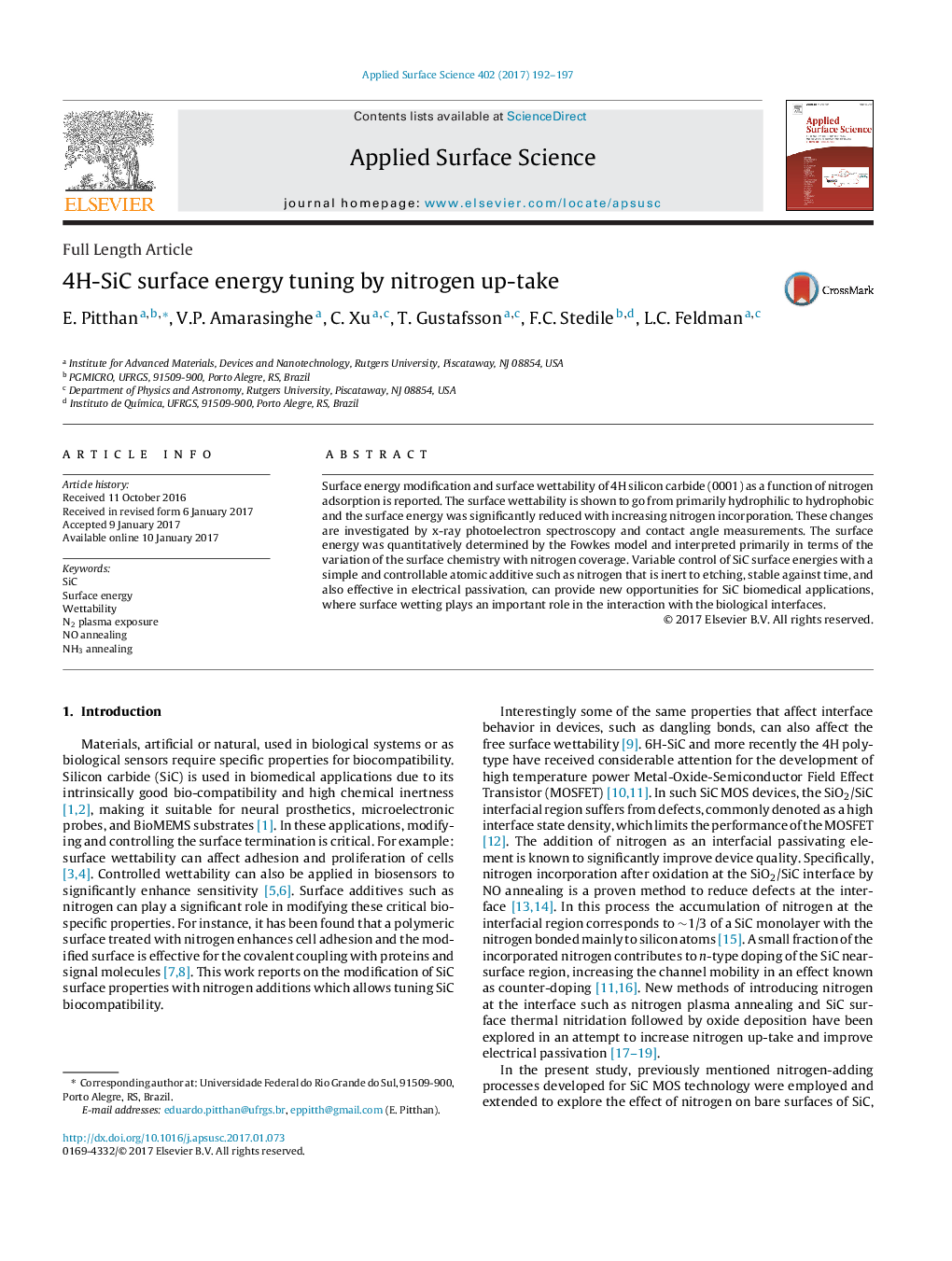| Article ID | Journal | Published Year | Pages | File Type |
|---|---|---|---|---|
| 5352260 | Applied Surface Science | 2017 | 6 Pages |
Abstract
Surface energy modification and surface wettability of 4H silicon carbide (0001) as a function of nitrogen adsorption is reported. The surface wettability is shown to go from primarily hydrophilic to hydrophobic and the surface energy was significantly reduced with increasing nitrogen incorporation. These changes are investigated by x-ray photoelectron spectroscopy and contact angle measurements. The surface energy was quantitatively determined by the Fowkes model and interpreted primarily in terms of the variation of the surface chemistry with nitrogen coverage. Variable control of SiC surface energies with a simple and controllable atomic additive such as nitrogen that is inert to etching, stable against time, and also effective in electrical passivation, can provide new opportunities for SiC biomedical applications, where surface wetting plays an important role in the interaction with the biological interfaces.
Related Topics
Physical Sciences and Engineering
Chemistry
Physical and Theoretical Chemistry
Authors
E. Pitthan, V.P. Amarasinghe, C. Xu, T. Gustafsson, F.C. Stedile, L.C. Feldman,
